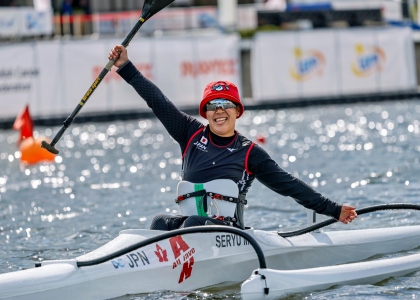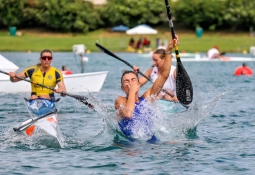Ever wondered how classification in Paracanoe is determined? Don't worry! We have got you covered.
Athletes competing at the Paris 2024 Paralympic Games have been classified depending on the type of boat and impairment.
The competition takes place between athletes who have similar abilities and not identical.
There are two types of boats in Paracanoe – kayak (K) that uses a double-blade paddle and va'a (V) that has an outrigger attached to one side of the boat to help balance and uses a single blade paddle.
Both boats have three classes for men and women. These are KL1, KL2 and KL3 for kayak and VL1, VL2 and VL3 for va’a.
KL1 – Athletes with no or very limited trunk function and typically need a special seat with a high backrest in the kayak.
KL2 – Athletes with partial trunk or leg function, able to sit upright in the kayak but may require a specific backrest. Limited leg movement during paddling.
KL3 – Athletes with trunk function and partial leg function, able to sit with the trunk in a forward flexed position and able to use at least one leg/prosthesis.
VL1 – Athletes with no or limited trunk function and no function in the legs and will need a seat which has a high back and lateral support.
VL2 – Athletes are scored on their trunk and leg function. This class is for those who score lower on the trunk function but have a higher leg function score, or vice versa.
VL3 – Athletes with full trunk function or almost full trunk function and partial leg function.
For the full International Canoe Federation classification rules and regulations, click here.




